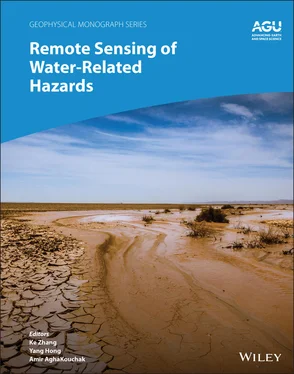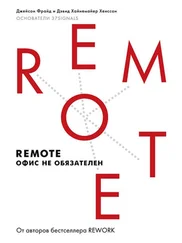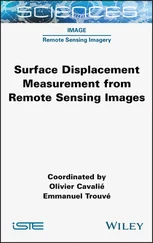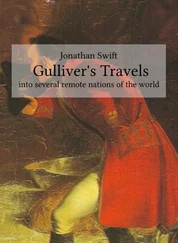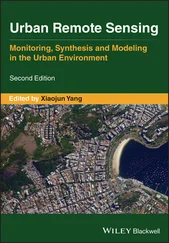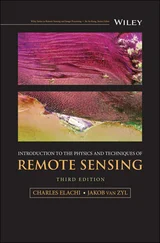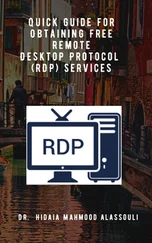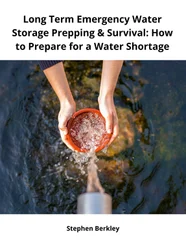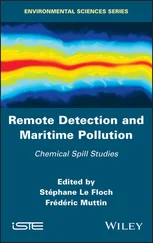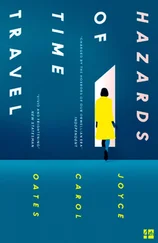Remote Sensing of Water-Related Hazards
Здесь есть возможность читать онлайн «Remote Sensing of Water-Related Hazards» — ознакомительный отрывок электронной книги совершенно бесплатно, а после прочтения отрывка купить полную версию. В некоторых случаях можно слушать аудио, скачать через торрент в формате fb2 и присутствует краткое содержание. Жанр: unrecognised, на английском языке. Описание произведения, (предисловие) а так же отзывы посетителей доступны на портале библиотеки ЛибКат.
- Название:Remote Sensing of Water-Related Hazards
- Автор:
- Жанр:
- Год:неизвестен
- ISBN:нет данных
- Рейтинг книги:5 / 5. Голосов: 1
-
Избранное:Добавить в избранное
- Отзывы:
-
Ваша оценка:
- 100
- 1
- 2
- 3
- 4
- 5
Remote Sensing of Water-Related Hazards: краткое содержание, описание и аннотация
Предлагаем к чтению аннотацию, описание, краткое содержание или предисловие (зависит от того, что написал сам автор книги «Remote Sensing of Water-Related Hazards»). Если вы не нашли необходимую информацию о книге — напишите в комментариях, мы постараемся отыскать её.
Remote Sensing of Water-Related Hazards Remote Sensing of Water-Related Hazards
The American Geophysical Union promotes discovery in Earth and space science for the benefit of humanity. Its publications disseminate scientific knowledge and provide resources for researchers, students, and professionals.
Remote Sensing of Water-Related Hazards — читать онлайн ознакомительный отрывок
Ниже представлен текст книги, разбитый по страницам. Система сохранения места последней прочитанной страницы, позволяет с удобством читать онлайн бесплатно книгу «Remote Sensing of Water-Related Hazards», без необходимости каждый раз заново искать на чём Вы остановились. Поставьте закладку, и сможете в любой момент перейти на страницу, на которой закончили чтение.
Интервал:
Закладка:
14 Elsadek, W. M., Ibrahim, M. G., & Mahmod, W. E. (2019). Runoff hazard analysis of Wadi Qena Watershed, Egypt based on GIS and remote sensing approach. Alex Eng J, 58(1), 377–385. doi:10.1016/j.aej.2019.02.001
15 Entekhabi, D., Njoku, E. G., O'Neill, P. E., Kellogg, K. H., Crow, W. T., Edelstein, W. N., et al. (2010). The soil moisture active passive (SMAP) mission. Proceedings of the IEEE, 98(5), 704–716.
16 Franci, F., Mandanici, E., & Bitelli, G. (2015). Remote sensing analysis for flood risk management in urban sprawl contexts. Geomatics, Natural Hazards and Risk, 6, 583–599. doi:10.1080/19475705.2014.913695
17 Fu, B. H., Shi, P. L., Wang, P., Li, Q., Kong, P., & Zheng, G. D. (2009). Geometry and kinematics of the 2008 Wenchuan earthquake surface ruptures around the Qushan Town of Beichuan County, Sichuan: Implications for mitigation of seismic and geologic disasters. Chinese Journal of Geophysics—Chinese Edition, 52(2), 485–495.
18 Gu, X. H., Zhang, Q., Li, J. F., Chen, D. L., Singh, V. P., Zhang, Y. Q., et al. (2020). Impacts of anthropogenic warming and uneven regional socio‐economic development on global river flood risk. J. Hydrol., 590. doi:10.1016/j.jhydrol.2020.125262
19 Gui, H. R., Qiu, H. L., Chen, Z. B., Ding, P. F., Zhao, H. H., & Li J. (2020). An overview of surface water hazards in China coal mines and disaster‐causing mechanism. Arab J Geosci, 13(2). doi:10.1007/s12517‐019‐5046‐0
20 Guo, H. D., Wang, X. Y., Li, X. W., Liu, G., Zhang, L., & Yan, S. Y. (2010). Yushu earthquake synergic analysis using multimodal SAR datasets. Chinese Science Bulletin, 55(31), 3499–3503. doi:10.1007/s11434‐010‐4078‐3
21 Haemmig, C., Huss, M., Keusen, H., Hess, J., Wegmuller, U., Ao, Z. G., & Kulubayi, W. (2014). Hazard assessment of glacial lake outburst floods from Kyagar glacier, Karakoram mountains, China. Annals of Glaciology, 55(66), 34–44. doi:10.3189/2014AoG66A001
22 He, B. S., Huang, X. L., Ma, M. H., Chang, Q. R., Tu, Y., Li, Q., Zhang, K., & Hong, Y. (2018). Analysis of flash flood disaster characteristics in China from 2011 to 2015. Nat Hazards, 90(1), 407–420.
23 Hong, H. Y., Chen, W., Xu, C., Youssef, A. M., Pradhan, B., & Bui, D. T. (2017). Rainfall‐induced landslide susceptibility assessment at the Chongren area (China) using frequency ratio, certainty factor, and index of entropy. Geocarto Int, 32(2), 139–154. doi:10.1080/10106049.2015.1130086
24 Huffman, G. J., Adler R. F., Bolvin D. T., Gu G. J., Nelkin E. J., Bowman K. P., et al. (2007). The TRMM multisatellite precipitation analysis (TMPA): Quasi‐global, multiyear, combined‐sensor precipitation estimates at fine scales. J. Hydrometeorol., 8(1), 38–55.
25 Huntington, T. G. (2010). Climate warming‐induced intensification of the hydrologic cycle: An assessment of the published record and potential impacts on agriculture. Adv Agron, 109, 1–53. doi:10.1016/S0065‐2113(10)09001‐2
26 IPCC (2013). Climate change 2013: The physical science basis. Contribution of Working Group I to the Fifth Assessment Report of the Intergovernmental Panel on Climate Change. Cambridge, UK: Cambridge University Press.
27 Islam, A. S., Bala, S. K., & Haque, M. A. (2010). Flood inundation map of Bangladesh using MODIS time‐series images. J Flood Risk Manag, 3(3), 210–222. doi:10.1111/j.1753‐318X.2010.01074.x
28 Jones, M. O., Jones, L. A., Kimball, J. S., & McDonald, K. C. (2011). Satellite passive microwave remote sensing for monitoring global land surface phenology. Remote Sens. Environ., 115(4), 1102–1114.
29 Kam, P. M., Aznar‐Siguan, G., Schewe, J., Milano, L., Ginnetti, J., Willner, S., et al. (2021). Global warming and population change both heighten future risk of human displacement due to river floods. Environmental Research Letters, 16(4). doi:10.1088/1748‐9326/abd26c
30 Kerr, Y. H., Waldteufel, P., Richaume, P., Wigneron, J. P., Ferrazzoli, P., Mahmoodi, A., et al. (2012). The SMOS soil moisture retrieval algorithm. IEEE Transactions on Geoscience and Remote Sensing, 50(5), 1384–1403.
31 Khaing, Z. M., Zhang, K., Sawano, H., Shrestha, B. B., Sayama, T., & Nakamura, K. (2019). Flood hazard mapping and assessment in data‐scarce Nyaungdon area, Myanmar. Plos One, 14(11), e0224558. doi:10.1371/journal.pone.0224558
32 Kirschbaum, D., Watson, C. S., Rounce, D. R., Shugar, D. H., Kargel, J. S., Haritashya, U. K., et al. (2019). The state of remote sensing capabilities of cascading hazards over high mountain Asia. Front Earth Sci, 7. doi:10.3389/feart.2019.00197
33 Kumar, C. S., Murugan, P. A., Krishnamurthy, R. R., Batvari, B.P.D., Ramanamurthy, M. V., Usha, T., & Pari, Y. (2008). Inundation mapping: A study based on December 2004 tsunami hazard along Chennai coast, Southeast India. Nat Hazard Earth Sys, 8(4), 617–626.
34 Lehnert, C., Karlsson, E., & Giannopapa, C. (2017). Global risk & global challenges: Space as a game changer for socioeconomic sustainable development. Acta Astronaut, 140, 59–65.
35 Lindell, D. B., & Long, D. G. (2016). High‐resolution soil moisture retrieval with ASCAT. IEEE Geosci. Remote Sensing Lett., 13(7), 972–976.
36 Lissak, C., Bartsch, A., De Michele, M., Gomez, C., Maquaire, O., Raucoules, D., & Roulland, T. (2020). Remote sensing for assessing landslides and associated hazards. Surveys in Geophysics, 41(6), 1391–1435. doi:10.1007/s10712‐020‐09609‐1
37 Makinano‐Santillan, M., Serviano J., Rubillos C. K., Amora A., Santillan J. R., Morales E. M., et al. (2019). Near‐real time hazard monitoring and information dissemination through integration of remote sensing, GIS, numerical modelling, web applications and social media. ISPRS Ann Photo Rem, 4‐3(W1), 25–32. doi:10.5194/isprs‐annals‐IV‐3‐W1‐25‐2019
38 Mätzler, C. (2006). Thermal microwave radiation: Applications for remote sensing. London: The Institute of Engineering and Technology.
39 Meng, Y. S., Lan, H. X., Li, L. P., Wu, Y. M., & Li, Q. W. (2015). Characteristics of surface deformation detected by X‐band SAR interferometry over Sichuan‐Tibet grid connection project area, China. Remote Sens., 7(9), 12265–12281.
40 Mitchard, E.T.A., Saatchi, S. S., Lewis, S. L., Feldpausch, T. R., Woodhouse, I. H., Sonke, B., et al. (2011). Measuring biomass changes due to woody encroachment and deforestation/degradation in a forest‐savanna boundary region of central Africa using multi‐temporal L‐band radar backscatter. Remote Sens. Environ., 115(11), 2861–2873.
41 Mu, Q., Heinsch F. A., Zhao, M., & Running, S. W. (2007). Development of a global evapotranspiration algorithm based on MODIS and global meteorology data. Remote Sens. Environ., 111(4), 519–536.
42 NASA (1987). Space‐based remote sensing of the Earth: A report to the Congress. Washington, D.C.: National Aeronautics and Space Administration.
43 Njoku, E. G. (2014). Encyclopedia of remote sensing. New York: Springer.
44 Njoku, E. G., Jackson, T. J., Lakshmi, V., Chan, T. K., & Nghiem, S. V. (2003). Soil moisture retrieval from AMSR‐E. IEEE Transactions on Geoscience and Remote Sensing, 41(2), 215–229.
45 Paprotny, D., Sebastian, A., Morales‐Napoles, O., & Jonkman, S. N. (2018). Trends in flood losses in Europe over the past 150 years. Nat Commun, 9.
46 Parinussa, R. M., Holmes, T. R., Wanders, N., Dorigo, W. A., & de Jeu, R. A. (2015). A preliminary study toward consistent soil moisture from AMSR2. Journal of Hydrometeorology, 16(2), 932–947.
47 Prabhakara, C., Meneghini, R., Short, D. A., Weinman, J. A., Iacovazzi, R., Oki, R., & Cadeddu M. (1998). A TRMM microwave radiometer rain retrieval method based on fractional rain area. Journal of the Meteorological Society of Japan, 76(5), 765–781.
48 Reichle, R., De Lannoy, G., Liu, Q., Ardizzone, J., Kimball, J., & Koster, R. (2016). SMAP Level 4 surface and root zone soil moisture. Paper presented at Geoscience and Remote Sensing Symposium (IGARSS), 2016 IEEE International.
Читать дальшеИнтервал:
Закладка:
Похожие книги на «Remote Sensing of Water-Related Hazards»
Представляем Вашему вниманию похожие книги на «Remote Sensing of Water-Related Hazards» списком для выбора. Мы отобрали схожую по названию и смыслу литературу в надежде предоставить читателям больше вариантов отыскать новые, интересные, ещё непрочитанные произведения.
Обсуждение, отзывы о книге «Remote Sensing of Water-Related Hazards» и просто собственные мнения читателей. Оставьте ваши комментарии, напишите, что Вы думаете о произведении, его смысле или главных героях. Укажите что конкретно понравилось, а что нет, и почему Вы так считаете.
